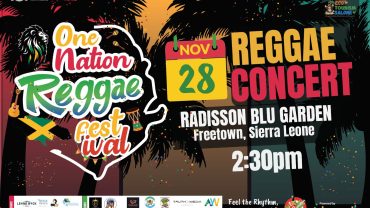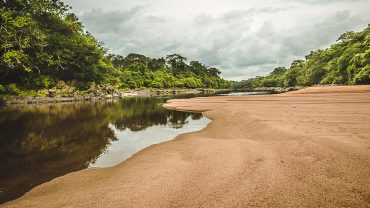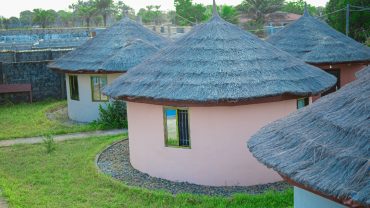The Gola Forest is the largest area of lowland rain forest remaining in Sierra Leone, and is one of the most important sites for the conservation of threatened wildlife in the ountry.
The three forest reserves, which comprise Gola Forest (Gola North, 45,800 ha; Gola East 22,800 ha; Gola West 6,200 ha), are located in the Eastern and Southern Provinces, about 330km southeast of Freetown. Gola forest covers parts of the Gaura, Tunkia, Nomo, and Koya Chiefdoms in the Kenema District; Barri and Makpele Chiefdoms in the Pujehun District; and Malema Chiefdom in the Kailahun District. The forest forms part of Sierra Leone’s border with the Republic of Liberia. Small areas of forest remain outside the reserves and connect the reserves to each other and to forests in Liberia. Tiwai Island, in the Moa river, west of Gola West is part of the Gola forest IBA.
The Gola Forest is the largest tract of closed canopy, lowland rain forest in Sierra Leone. Gola North is fairly hilly and rugged with most land lying over 300m asl, the highest point being 475 m. The Mogbai is the main river draining Gola North and its catchment area lies at the centre of the reserve. This river discharges east into the River Mano, which runs along the border with Liberia. Gola East and Gola West, which are separated by the Mahoi River, are low lying with swampy areas and a few low hills (up to 150 m). Bagra Hill (330 m) is the highest point in Gola East.
Birds
G.D. Field recorded 216 species including 169 forest dependent species in the Gola forest between 1970 and 1976. He also discovered the Gola Malimbe in the Gola forest, although the first published description of the bird came from Cote d’Ivoire (Field, 1979; Thiollay, 1985). Davies (1987) did a surveyed of the forest primarily for mammals and alerted international conservation organisations to the presence of the White-breasted Guineafowl. Allport et al (1989) recorded 274 species including seven globally threatened species. Gola Forest is now known to hold eight globally threatened species (all of which are restricted to the Upper Guinea Forest block) – White-breasted Guineafowl (Vu), Rufous Fishing Owl (En), Western Wattled Cuckoo-shrike (Vu), Green-tailed Bristlebill (Vu), Yellow-throated Olive Greenbul (Vu), White-necked Picathartes (Vu), Nimba Flycatcher (Vu) and Gola Malimbe (En) – five near-threatened and one data deficient species. The forest is most certainly the country’s stronghold for the vulnerable White-necked Rockfowl (52 breeding sites and over 116 active nests) and the endangered White-breasted Guinea- fowl (groups of up to 12 birds seen). The forest holds over 90% of the Guinea-Congo Forest biome species that occur in Sierra Leone.
Mammals
Davies (1987), recorded 56 mammal species, including nine rare and threatened species. The threatened primate species are the Western Chimpanzee (En), Red Colobus Monkey (Vu), Olive Colobus (NT), Black and White Colobus (NT), Sooty Mangabey (NT) and Diana Monkey (Vu). Other mammals of conservation concern include, the Forest Elephant (Vu), Leopard (Vu), Zebra Duiker (Vu) Jentinck’s Duiker (Vu), Maxwell Duiker (NT), Black Duiker (NT), Pygmy Hippopotamus (Vu), and the Forest Buffalo (NT).
Access and Facilities
Kenema, 38 km to the west, and Pujehun, 30 km to the south, are the nearest big towns through which different sections of the reserve can be accessed by road. Accommodation facilities in villages around the reserve are very basic. Electricity is currently lacking, but most of the villages have gravity water supply systems. Key areas of interest around the reserves are the Tiwai Island Game Sanctuary (part of the Gola Forest IBA about 10 km west of Gola West), and Lakes Mape and Mabesi (proposed IBAs), which are the largest lakes in the country and are about 55km southwest of Gola Forest. These places are also accessible by road.
See also:
https://www.golarainforest.org/
Information provided courtesy of the Conservation Society of Sierra Leone




Comment (0)